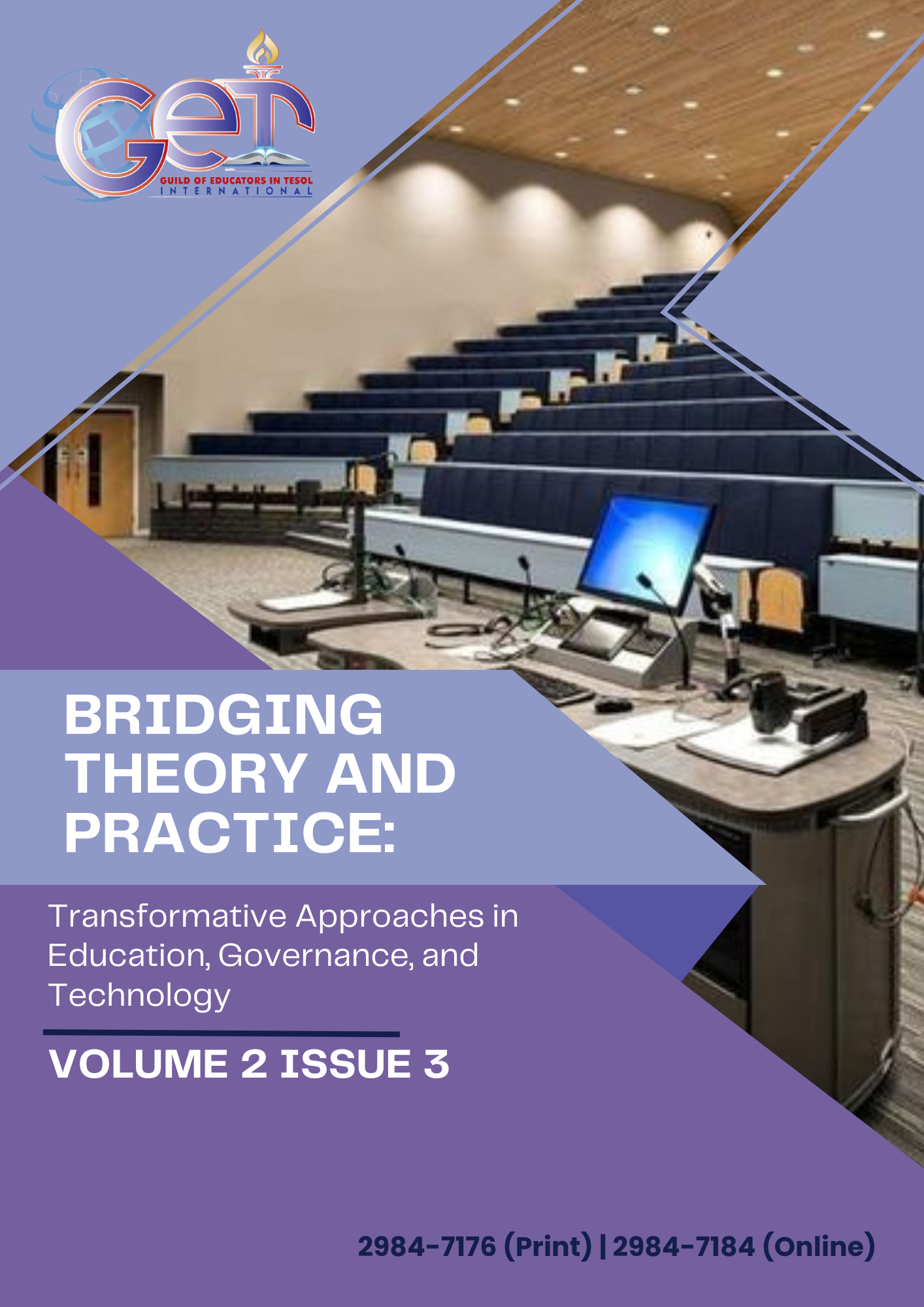






 View PDF
View PDF
ISSN: 2984-7176 (Print) | 2984-7184 (Online)
PUBLISHER: Guild of Educators in TESOL International Institute
PUBLICATION FORMAT: Online
FREQUENCY: Quarterly (Feb, May, Aug, Nov)
LANGUAGE: English | Filipino
ESTABLISHED: 2023
VOLUME: 2
ISSUE: 3
PUBLICATION YEAR: 2024
AUTHOR(S): Lea G. Solis
Emilio Aguinaldo College
This study assessed the juvenile delinquency in terms of the following: Children below the age of criminal responsibility, Serious Crimes Committed by Children Who Are Exempt from Criminal Responsibility, Repetition of offenses, Exploitation of Children for Commission of Crimes, and Joint Parental Responsibility. Likewise, Barangay’s Prevention Practices in terms of Regular Monitoring of Children’s Activities, Implementation of Curfew Hours, Community- Based Rehabilitation Programs, Anti-Drug Campaigns, Provision of Livelihood Programs, Youth Leadership Training, Engagement in Sports and Recreational Activities, and Collaboration with Non-Governmental Organizations (NGOs) The data consistently highlights that juveniles are significantly influenced by their developmental stage and their environment, including peer pressure, family dynamics, and socio-economic conditions. The study stresses the importance of community-based strategies and collaboration with NGOs in addressing juvenile delinquency and supporting community development. The study reveals that there are no significant differences in perceptions of juvenile delinquency based on sex. While specific aspects of juvenile delinquency do not show significant differences across age groups, the overall perceptions do vary notably. The study finds no significant correlation between respondents’ perceptions of juvenile delinquency and their views on the barangay’s prevention practices. The researcher proposed the following recommendations: 1) Implementation of recruitment strategies to ensure that both males and females are equally represented. Additionally, program planners should consider gender- specific needs and barriers to participation, ensuring that interventions are accessible and relevant to all genders; 2) Develop and implement multifaceted juvenile intervention programs that address both prevention and rehabilitation. Programs should focus on the unique developmental needs of juveniles, including mental, emotional, and psychological support; 3) Strengthening collaborations with NGOs and other community-based organizations; 4) Keep the youth engaged in positive pursuits, it is important to expand and diversify the range of activities available; 5) Establishing organized sports leagues, investing in community sports facilities, and developing varied recreational programs can help in keeping children and adolescents occupied and away from negative influences; 6) Introducing cultural and artistic programs, in addition to traditional sports, can cater to a broader range of interests and talents among the youth. These activities should be designed to foster a sense of community, responsibility, and personal growth; and 7) Comprehensive community outreach initiatives to raise awareness about child rights and the risks associated with drug use.
Juvenile delinquency, Criminal responsibility, Serious crimes, Repetition of offenses, Exploitation of children, Joint parental responsibility, Juvenile delinquency, Criminal responsibility, Serious crimes, Repetition of offenses, Exploitation of children, Joint parental responsibility
Solis, L. G. (2024). BARANGAY INTERVENTION PROGRAM FORTHE PREVENTION OF JUVENILES TO BECOMING CHILDREN IN CONFLICT WITH THE LAW.In GUILD OF EDUCATORS IN TESOL INTERNATIONAL RESEARCH JOURNAL (Vol. 2,Number 3, pp. 133–239).
https://doi.org/10.5281/zenodo.13895473
GET INTERNATIONAL RESEARCH JOURNAL IS INDEXED BY:
PLAGIARISM CHECKED BY:

This work is licensed under Creative Commons Attribution-ShareAlike 4.0 International